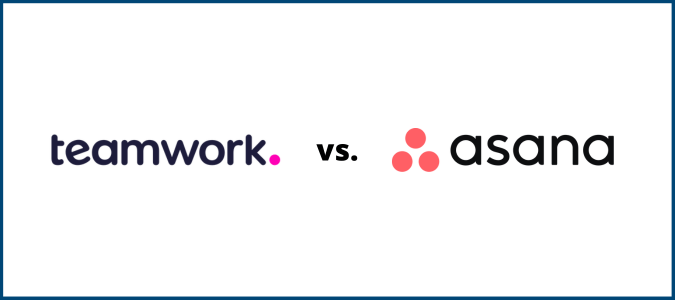Microsoft Teams is an excellent collaboration tool. Not only does it provide video and audio conferencing, but it also offers a chat function, file sharing, and more.
But Microsoft Teams offers a limited number of communication channels, which can be a problem for larger companies. And with limited scalability and rigid permissions settings, it might not be the best tool for every organization.
The good news is that it’s not the only tool out there.
After trying out several alternatives, we’ve compiled a list of the best team collaboration software options that aren’t Microsoft Teams.
The Best Microsoft Teams Alternatives
RingCentral is the best alternative to Microsoft Teams for most organizations. It’s one of the most robust free software solutions on the market for video conferencing. And, with its mobile app, you can join or host a meeting from anywhere.
Zoho Meeting is another excellent video conferencing solution that also offers webinars and telephone conferencing. It’s a great solution for companies that need to hold large-scale events or provide customer support.
Livestorm is the best alternative for online events. It offers a wide range of features, including live streaming, recording, and interactive features like polls and surveys.
More Top Video Conferencing Software
If you’re an individual, just about any video conferencing software will do the trick. For businesses, it’s important to choose a platform that’s reliable and has all the features you need.
That’s why we’ve also compiled a list of the best video conferencing software for business. See all of our top picks to choose the one that’s right for your team.
Our Take on Microsoft Teams

If you run a big business, Microsoft Teams might be your best friend. It integrates with Outlook, SharePoint, and other Microsoft products seamlessly. And since it can easily host web events with up to 10,000 participants, it is the solution of choice for many organizations needing enterprise-grade video conferencing.
If you already use Microsoft 365, Outlook, or anything else in Microsoft’s suite of products, adding Teams is almost a no-brainer. At no extra cost, you can get all the features of a top-tier video conferencing solution.
If you are on a budget and looking at Microsoft Teams as a standalone solution, the paid plan is only $4 per user per month.
Like most video conferencing software, Teams doesn’t require invitees to make an account before jumping on a call. Anyone who has the link can join without hassle.
You’re also getting the full array of features you’d expect. In addition to video and audio conferencing and team chat, Teams allows you to record meetings, enable live captioning, and utilize auto-transcription, which is perfect for sales calls.
Users can share their screens, create virtual settings, obscure their backgrounds, and raise their hands to ensure that your meetings are interactive and productive from the start. To keep the thinking flowing, you can even start a virtual whiteboarding session.
The bottom line is that Microsoft Teams is a great solution for businesses that need an enterprise-grade video conferencing solution. If you need company-wide collaboration and video conferencing for large groups, it’s hard to beat.
But if you’re an individual or small business, there are plenty of other video chat platforms that could be a more viable option for you.
Microsoft Teams vs. RingCentral

RingCentral is a cloud-based communications platform that offers voice, video, messaging, and team collaboration. Whether you need VoIP, video conferencing, or a team chat solution, RingCentral has you covered.
RingCentral also offers integrations with popular CRM and productivity platforms, making it easy for businesses to manage all their communications from a single interface.
If you’re not looking for a full UCaaS solution, the company offers a standalone video conferencing tool called RingCentral Video. This tool includes all the features you need for online meetings, including screen sharing, video recording, and live transcription.
It’s free to use, but that doesn’t mean that it’s short on features. In fact, it includes everything you need for high-quality video conferencing, including HD video and audio, screen sharing, and group chat. Plus, if you send out meeting invites, they integrate with Google Calendar and Outlook, so your invitees can easily add the meeting to their calendars.
Best of all, it allows up to 100 meeting participants and 24 hours’ worth of meeting time on this free plan. While Microsoft Teams’ free plan also allows up to 100 attendees, group meetings are capped at 60 minutes each. So your smaller team can stay on RingCentral’s free plan and still find it useful, whereas you’re eventually going to have to pay for Microsoft Teams to be effective.
That being said, be aware that RingCentral’s paid plans are a great deal more expensive than either a Microsoft Teams or Microsoft 365 plan. If RingCentral Video is lacking in any way for your small operation, you may get better value from paying Microsoft for your video conferencing solution.
But, if your needs are met by RingCentral Video, you can hold as many meetings as you want, for as long as you want, without ever having to pay a dime.
Microsoft Teams vs. Zoho Meetings

Zoho is well-known for its other products, including its CRM software and Marketing Hub, but the company also offers a video conferencing tool called Zoho Meeting.
Zoho Meeting is a web-based platform that offers a fantastic combination of features and budget-friendliness. HD video and audio, screen and file sharing, and group chat come standard on all plans, even the free one.
Paid plans come in two flavors: Meeting and Webinar.
Meeting is for team, departmental, or organizational video calls and scales based on how many people need to attend. Pricing starts at $3 per host per month, but that only allows for 10 participants, whereas Microsoft Teams is $4 per user per month for up to 300.
You do get some unique tools you won’t find in Microsoft Teams, though, including custom branding and an easy tool for embedding your meeting on your website.
But it’s the webinar option that shines, as Microsoft Teams isn’t equipped to handle those nearly as well.
If you host webinars with fewer than 1,000 people, Zoho Meeting is probably the best way to do it.
You don’t need to spend hundreds of dollars a month on software to funnel leads into your sales pipeline, teach existing customers, or provide free educational materials.
Zoho Meeting is an easy-to-use live event and webinar tool since it prioritizes simplicity. And, despite Zoho’s inherent simplicity, it actually has lots of customizability options.
When creating a new Zoho meeting, the first step is to choose whether you want it to be a one-time event or a recurring meeting.
You can also set up an agenda, enable registration, set the date and time, and add custom fields. Then, you can start a meeting immediately or schedule it for later.
You are allowed to enter custom fields as well, which you can use to collect information from your attendees.
You can approve, reject, or cancel registrations to ensure that the correct individuals participate in your webinar as more registrants arrive. Spam and scammers are not allowed.
Attendees can join your webinar in one click from any browser without having to download software, and they may do so by phone for free from over 100 countries.
Pricing for Zoho’s webinar solution starts at $16 per month for up to 25 attendees, scaling up to $300 for 3,000 attendees.
Microsoft Teams vs. Livestorm

Livestorm is a web-based video conferencing solution that also excels at webinars and virtual events. Zoho Meeting won’t be enough if you want to host professional-level webinars—that’s where Livestorm comes in.
You’ll find everything you need to run live webinars, record on-demand webinars, and set up automated events. Whether you’re teaching a class, hosting a sales call, or overseeing a virtual conference, you can leverage serious tools to engage with your audience in real time.
Livestorm also gives you an unlimited amount of space to store your webinars, so that you can go back and watch them later or use them as training materials for new employees or for customers who couldn’t attend the live event.
Download them and share them with anyone, whether or not they have a Livestorm account. This is perfect if you want to create an evergreen lead magnet out of one of your live events.
Livestorm integrates with over 1,000 different business software solutions and is GDPR, SOC II, and HIPAA compliant. So you can confidently charge for your Livestorm webinars, book appointments, consult over video, or sell products in your virtual events.
Our favorite standout feature, though, is its built-in registration pages.
With Livestorm’s tools, you can create beautiful registration pages that match your brand without having to worry about coding or design. And they’re proven to convert.
While hosting these webinars can get expensive quickly, with plans starting at $88 per month, it’s worth it if you’re looking for an all-in-one solution that empowers you to make killer webinars.
Summary
When it comes to video conferencing software, there are a lot of options out there. And while Microsoft Teams is a popular option for large businesses, it’s not the only one.
If you’re looking for a small business-friendly alternative to Microsoft Teams that’s both easy to use and affordable, RingCentral is the perfect choice. It’s free to use, allows for 24 hours of video calls, and offers most of the features that you would expect from a webinar platform.
Zoho offers the best option for hosting a small or medium-sized webinar. It offers HD video and audio, live streaming, granular control over registrations, and more.
Livestorm is another excellent choice if you need to host professional-level live and recorded virtual events. With it, you gain the ability to turn your webinars and video content into lead-generating machines.
So, what’s the best video conferencing software for your needs?
Only you can decide that. By accounting for your business needs, budget, and the features that are most important to you, you’ll be able to choose the right video conferencing software for your business.















